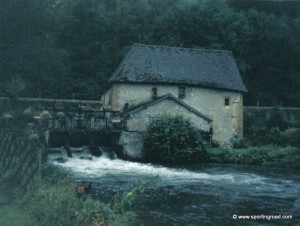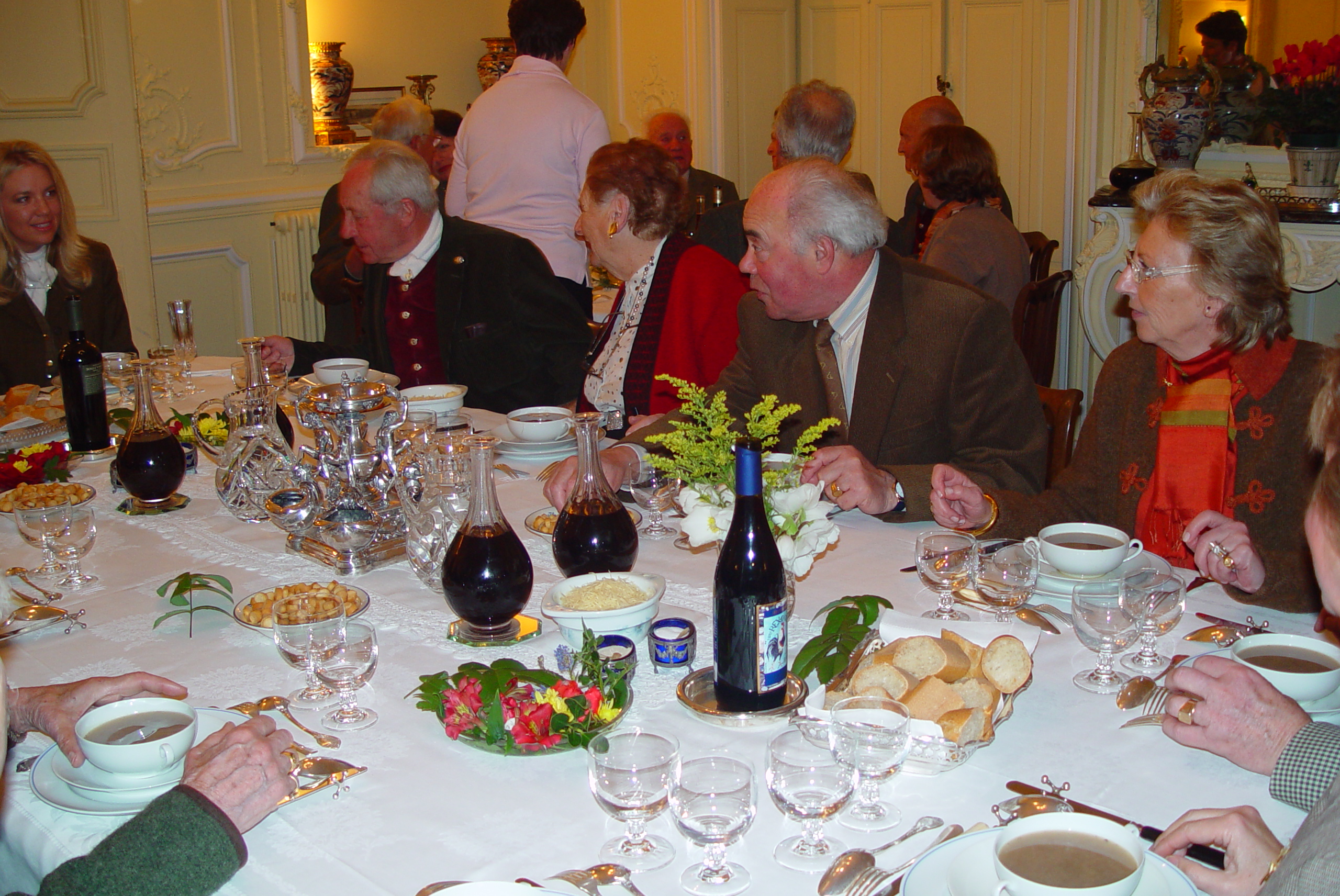What is a typical seven course French menu? Here is your classical 7-course French dinner menu, as we have seen throughout France and as we like to serve at home here in the States. Yes, there are nine numbers listed below, but café (coffee) isn’t really a course to itself, but it is listed there as a “course” as way to remind us that the French only take the coffee after the dessert, not with it. When at fine dining in the States with French friends and the waiter brought coffee just before the dessert arrived, (as is our custom to serve coffee with dessert), they were aghast. French friends were always very confused by this, asking the waiter, “But you forgot the dessert we ordered.” It never occurs to them that coffee would come with the dessert, as it ruins the taste.
And, dessert, is often followed by another “course” at the table or in the parlor consisting of a glass of brandy, cognac or Armagnac.
And you can leave out either the fish or the salade course, and then you will be at the proper seven-courses (if that is how you see life as something rigid meant to fall strictly at 7 and not 8 or 9), as it really depends upon your feeling of the heaviness of the other courses and what best compliments the others.
We usually add “a pre-dessert course,” served just before the dessert course. Usually this is a simple Belgian chocolate or something along those lines for each diner, which is a nice touch and gives everyone a little breathing room. It is a very flexible art. The best meals in France always seem to have some off-menu flairs such as this, at home or at the restaurant, so feel free to improvise, this is not a law in France about this (and there is for nearly everything else in life).
- Starter (hors d’oeuvre)

- Potage (soup)
- Poisson (fish)
- Entrée (entry of 1st meat course)
- Sorbet
- Salades (salad)
- Fromage (cheese)
- Desserts (fresh fruits & nuts)
- Cafe (coffee)
Consistency, freshness of ingredients, keeping it seasonal, and flair of the chef is what makes dining turn into a memorable experience. Seven to seventeen courses doesn’t hurt in making it an experience for diners, so long as you follow the first rule. It is easy to get carried away with too many courses and lose sight of the first rule.
Not even the recent U.S. State dinner, hosted by President Biden for President Macron offered seven courses but only three—where the party will dine on butter-poached Maine lobster, American Ostrea caviar and beef with shallot marmalade followed by Oregon’s Rogue River Blue cheese, which won the World Cheese Awards gold medal, heads off the three-cheese course, along with a goat cheese from California and a cheddar from Wisconsin. For dessert the international group will indulge in orange chiffon cake, roasted pears and crème fraiche ice cream. Three California wines — a chardonnay, a cabernet sauvignon and a sparkling brut rose — round out the drink list. A meager offering by traditional standards:https://www.cnn.com/2022/12/01/politics/french-president-state-dinner-white-house
The state banquet with the Queen, — who is famously a “brisk eater” — where various royal dignitaries, and politicians took part at Buckingham Palace several years ago, which hosted President Trump. Typically, a menu of four courses is served at a state banquet: fish, meat, pudding, and dessert — which, distinct from pudding, is traditionally some fruit. Themenu for Donald Trump and his family was presented in French, as per tradition, and personally approved by the Queen, included a tranche of steamed fillet of halibut with watercress mousse, asparagus spears, and chervil sauce for starter. The main course was new season (spring) Windsor (Royal’s own) lamb with herb stuffing, spring vegetables — including carrots with tarragon and “Pommes Elizabeth” (the Queen’s potatoes?) — and a port sauce. Pudding was a strawberry sable with lemon verbena cream — a shortbread-like sweet stack. A selection of fresh fruit was served before coffee and petit fours.


Leave A Comment
You must be logged in to post a comment.